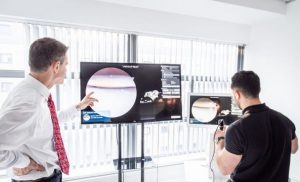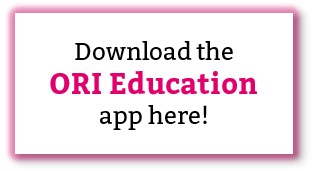Validation of the Anterior Cruciate Ligament (ACL) Module of the VirtaMed Virtual Reality Arthroscopy Trainer
Study Description: Orthopaedic surgeons need to learn how to perform ACL reconstructions during their training. Usually, this is a hands-on learning experience, where the resident is taught in a step-by-step manner by their trainer. However, it would be beneficial to be able to gain experience in ACL reconstruction before this stage. One of the ways of gaining experience is by using a newly developed ACL reconstruction module of a virtual reality arthroscopy trainer, in which the different steps of ACL reconstruction can be learned. This study aims to validate the ACL module of the VirtaMed virtual reality arthroscopy trainer, and prove it can distinguish between different levels of experience.
Objectives: To assess whether the trainer can differentiate between different levels of surgical experience.
Results: An independent Mann-Whitney U test showed no significant differences between experts and novices for any of the domains. Questionnaire responses regarding hand-eye coordination, camera navigation training, diagnostic training, tunnel preparation and overall training capacity were scored as either ‘good’ or ‘excellent’ by more than 70% of the participants. All responses regarding the ‘graft insertion task’ scored low. The current iteration of the VR knee ArthroS™ simulator (VirtaMed AG, Zurich, Switzerland) is promising, but requires further development of the ACL procedure, in particular the graft insertion task, before it can be considered as part of training curricula.
Publications:
Antonis J, Bahadori S, Gallagher K, Immins T, Wainwright TW, Middleton R. Validation of the anterior cruciate ligament (ACL) module of the VirtaMed virtual reality arthroscopy trainer. Surgical Technology International. 2019;35.





